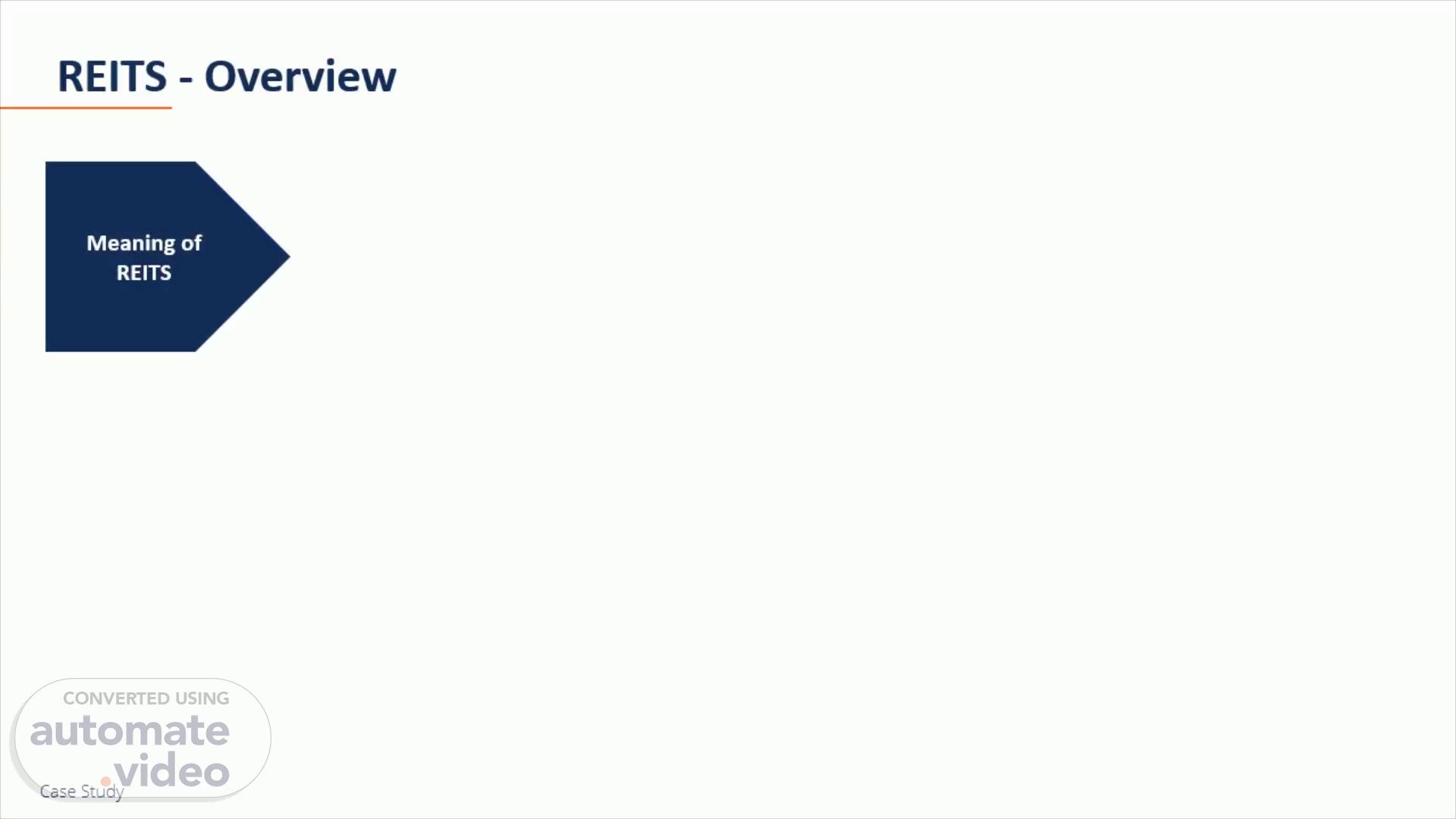Page 1 (0s)
REITS - Overview. Meaning of REITS. Investment of REITs.
Page 2 (1m 1s)
REITS – Important Qualifications for REIT. Conditions.
Page 3 (1m 57s)
REITS – Types of REITs. Office REITS. Residential REITs.
Page 4 (3m 6s)
REITS – Income Statement - Modelling. Description Revenue Driver Revenue: + Rental Income + Straight Line Rent + Miscellaneous Revenue & Fees = Total Revenue Same-Store Rent + Development/Redevelopment Rent + Acquisition Rent – Disposition Rent Average Previous Years or Hold Constant Expenses: – Property-Level Operating Expenses – Property Taxes – G&A / Corporate Overhead – Amortization of Financing Fees – Stock-Based Compensation – Impairment Charge – Depreciation – Net Interest Expense + Earnings / (Loss) from Equity Investments + Gain / (Loss) on Sale of Land = Income from continuing operations + Income from Discontinued Operations + Gain / (Loss) on Sale of Buildings and FF&E = Net Income Flows in from Segment Buildup Flows in from Segment Buildup % Revenue or Average Previous Years Flows in from Amortization Schedule or Constant % Revenue or Average Previous Years Assume Constant, Average, or $0 Buildings / Useful Life + FF&E / Useful Life Flows in from Debt Schedule Average Previous Years or Hold Constant Average Previous Years or Hold Constant Flows in from Dispositions Schedule Net Sale Proceeds – Book Value of Assets.
Page 5 (3m 47s)
REITS – Fund Flow from Operations & Adjusted FFO.
Page 6 (4m 43s)
REITS – Valuation using NAV. Net Asset Value. Net Asset Value = Net Operating Income x Cap Rate / Mortgage Liabilities 1 Step: Calculation of Net operating Income Net Operating Income: Rental Revenues – General & Administrative Expenses-Straight Line Rent We ignore other expenses as they are difficult to predict and reasonable assumption does not follow for them 2 Step: Adjust the cash NOI for adjustments or placements coming online during the quarter We need to adjust our NOI by any acquisitions made during the year, construction in progress, or any purchases that might have come online during the year We generally add any kind of acquisition, hence it will be added Cash NOI = NOI + Further acquisitions Step 3: Divide the Cash NOI by the Cap Rate for the REIT We can find the Cap rate for a particular stock in its filings Fair Market Value = Cash NOI / Cap Rate Step 4: Adjust Fair Market Value for Other Investments and Financing In the final step, we adjust the fair market value in the above step to include values for assets that are not generating NOI, and then we subtract total debt and preferred stock outstanding we find tangible assets such as cash and restricted cash, accounts receivable, and prepaid expenses. We do not include items such as deferred leasing, financing costs, or deferred rents. Also, add any assets held under the sale listed on the balance sheet NAV = Fair Market Value + Assets (Specific Listed above) – Liabilities (Listed above) Step 5: Calculation of NAV per Share Use the latest outstanding shares and Divide it by NAV, it will help us to arrive at intrinsic value of share using NAV Method.
